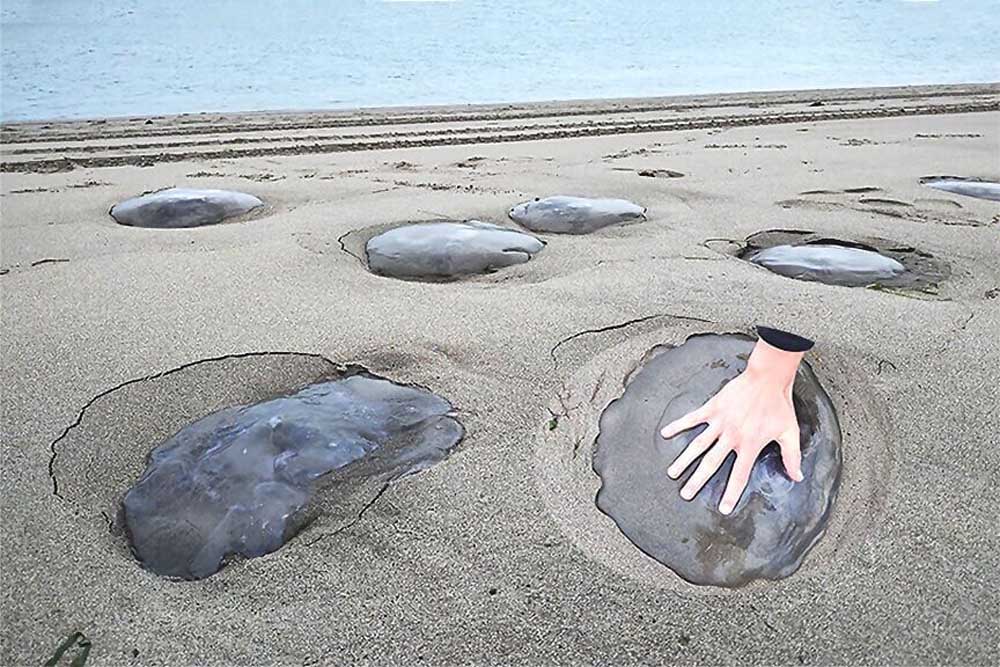Jellyfish come ashore, but live forever
Published 8:49 am Friday, October 4, 2024

- Jellyfish — with a hand added in Photoshop to provide a sense of scale — washed up in large numbers on either side of the Columbia River in recent weeks.
“Large jellyfish have been washing ashore, causing a lot of people to ask why,” the Seaside Aquarium posted on their Facebook page Sept. 24. “ … The simple answer is that this happens every year in the late summer and early fall.
“Jellyfish have two different body forms, medusa and polyp … Medusae reproduce through mass spawning, where eggs and sperm are released into the water. Fertilized eggs develop into free-swimming larvae called planulae. These flat, pear-shaped creatures eventually attach to a hard surface and develop into a polyp.
‘Those lifeless jellies … are essentially immortal, as their genetics continue, and clones of themselves will soon bud off their polyp form, and roam the open ocean once again.’
Seaside Aquarium
“Polyps … reproduce by splitting themselves in half, producing a genetically identical polyp. They can do this numerous times, creating a colony of polyps. … When ocean conditions are just right, the polyp starts a process called strobilation, and they begin to bud off ephyra, which develop into medusae.
“Polyps can live for years, even decades, but medusae tend to live for only a few short months, though in captivity some species can live up to a few years. When currents change or seas get rough, medusae wash ashore or get torn apart in the surf.”
Worried about that poor, stranded blob on the beach? “Don’t fret,” the aquarium advises. “Those lifeless jellies … are essentially immortal, as their genetics continue, and clones of themselves will soon bud off their polyp form, and roam the open ocean once again.”









